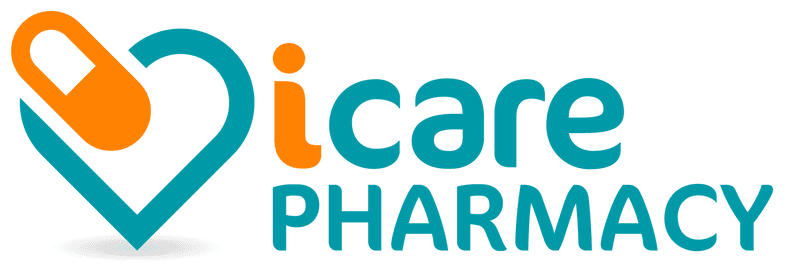What is ADHD?
ADHD stands for Attention Deficit Hyperactivity Disorder. It is a neurodevelopmental disorder that affects both children and adults. People with ADHD may have difficulty paying attention, controlling impulsive behaviors, and/or being excessively active or restless.
Patients with ADHD are thought to have reduced activity and connectivity in the Prefrontal cortex which is responsible for executive functions such as working memory, attention and impulse control.
Attention Deficit Hyperactivity Disorder (ADHD) is a lifelong condition that extends into adulthood from childhood. It is not something that you simply grow out of as you get older, and it can cause significant impairment in both childhood and adulthood.
It is crucial to get Children diagnosed and treated early on as it not only helps them perform better both socially as well as academically but also reduces the risk of them developing other coexisting conditions such as depression and anxiety. Early diagnosis can also help with reduction of the risk of future substance abuse, accidents due to carelessness or recklessness and ensures that they develop essential social skills.
Many adults as well go undiagnosed and the only way they discover their own diagnosis of ADHD in their children. For these adults this diagnosis is life changing because it can explain the inability to hold down a job or inattention that creeps into their daily tasks.
How is ADHD Diagnosed?
ADHD is typically diagnosed by a healthcare professional, such as a pediatrician, psychiatrist, or psychologist. The diagnostic process typically involves several steps, including:
- A comprehensive medical and family history: The healthcare professional will ask questions about the person’s medical and family history to rule out any other medical or psychological conditions that could be causing the symptoms.
- A physical exam: The healthcare professional will conduct a physical exam to rule out any physical conditions that could be causing the symptoms.
- Interviews and rating scales: The healthcare professional may conduct interviews with the person being evaluated, family members, and/or teachers. They may also use standardized rating scales to assess the severity of symptoms and impairments in functioning.
- DSM-5 criteria: The healthcare professional will use the criteria outlined in the Diagnostic and Statistical Manual of Mental Disorders (DSM-5) to make a diagnosis of ADHD.
It is important to note that there is no single test for ADHD and the diagnostic process can take some time. Additionally, the diagnosis of ADHD is based on a pattern of symptoms and impairments in functioning, rather than any specific test results.
The Three Core Categories of ADHD Symptoms
The symptoms of ADHD can be broken down into three core categories:
Inattention: includes difficulty concentrating, making careless mistakes, failing to complete tasks, difficulty organizing, and forgetfulness
Hyperactivity: include restlessness, excessive talking, difficulty playing quietly, and inappropriate running or climbing.
Impulsiveness: Everyone knows about Inattention and Hyperactivity as it is right there in the name. What gets overlooked as one of the core categories is impulsiveness. This includes blurting out answers, difficulty waiting turns, risk taking behavior as well as emotional impulsivity.
The Three Types of ADHD
Depending on which symptoms are predominant there are three types of ADHD:
- Predominantly Inattentive Type: characterized by difficulty with sustained attention, forgetfulness, disorganization, and distractibility.
2. Predominantly Hyperactive-Impulsive Type: characterized by fidgeting, restlessness, impulsivity, and difficulty with patience and waiting turns.
3. Combined Type: characterized by both inattentive and hyperactive-impulsive symptoms.
The Impact of ADHD on Quality of Life and Functional Impairment
ADHD often occurs before the age of 12 and for diagnosis purposes should be present in at least two settings. There should also be clear evidence of functional impairment, such as difficulty with social relationships, school or work function. The symptoms cannot be explained by another medical disorder or happen during the course of a psychotic disorder. That is not to say that ADHD just occurs in isolation. It is not uncommon for ADHD to be present with other medical conditions and if other medical conditions are present such as depression and anxiety it is equally important to treat the medical condition along with ADHD.
Recognizing Red Flags and The Diagnosis of ADHD
There are some red flags that indicate a potential ADHD diagnosis. They alone do not affirm a positive diagnosis of ADHD but they may be clues that an ADHD diagnosis should be investigated further. These Red Flags include:
Problems with organizational skills
Erratic work or academic performance
Difficulty managing finances or household routines
Frequent accidents due to recklessness or inattention,
Addiction to substances, shopping, overeating, video gaming, or gambling.
Having a direct relative who has ADHD also increases the likelihood of a diagnosis, as there is a strong genetic component.
ADHD in Children Vs Adults: How Symptoms Present Differently
As we move into adulthood, the symptoms of ADHD can present differently than in childhood.
Hyperactivity as a child for example might run or climb all over the place while hyperactivity may manifest as restlessness in adults.
Similarly impulsivity may present in children as having difficulty waiting their turn, while for adults it may present as interrupting others or finishing their sentences.
Inattention for children may present as not listening to others and in adults it may present as difficulty completing tasks.
Other Conditions That Can Mimic ADHD
It is crucial to exclude other potential medical conditions that could mimic ADHD symptoms, such as anxiety or depression. But as was alluded before it is not uncommon for both to be present. In this case it is important to treat both the coexisting conditions that are present with ADHD. Because if you just treat for example the ADHD but not the depression or anxiety you may end up in a situation where their symptoms may have improved but function and quality of life have not.
The Importance of Early diagnosis and Treatment
Treatment of ADHD and any other coexisting medical conditions is essential to reduce functional impairment and improve overall quality of life. Also early diagnosis and treatment can significantly impact not only the child’s life but also the emotional wellbeing of their parents. Additionally, recognizing and treating ADHD early is protective against the development of other psychiatric conditions in adulthood. Early intervention goes a long way in ensuring that they flourish in all aspects of life whether it is making friends on the playground or learning in the classroom.





